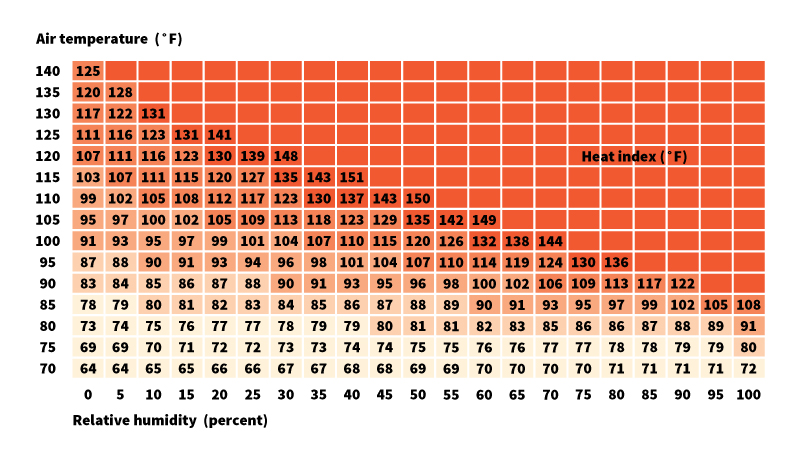Heat index, or HI, is a measure of how hot the air feels. In the United States, the National Weather Service uses the HI to alert the public to the dangers of extremely hot and humid weather. The higher the HI, the greater is the likelihood that people will develop heat-related illnesses. The heat index has replaced an older measure, the temperature-humidity index.

The HI is measured in Fahrenheit degrees, but takes into account the effects of both temperature and relative humidity. Relative humidity is the amount of water vapor in the air at a certain temperature, compared with the maximum amount possible at that temperature. HI values are for air in the shade in which a light wind is blowing. Exposure to direct sunshine can increase the HI up to 15 °F. Strong winds also present an extra hazard, especially when the air is hot and dry.
The National Weather Service alerts the public when it expects the heat index to be higher than 105 to 110 °F for at least two successive days. The exact HI chosen depends on the local climate. At such times, the Weather Service begins to include the HI in weather forecasts. It also issues statements describing hazards associated with the HI values, explaining how to reduce the risk of heat-related illness, and indicating what kinds of individuals are at high risk. High-risk groups include elderly people; small children; people with chronic (ongoing) illness; those on certain medications, especially tranquilizers; overweight individuals; and people who abuse alcohol.
During severe heat waves, the Weather Service helps the news media and local and state health officials issue civil emergency messages. These alerts include detailed information on heat disorders and how to reduce risk, as well as names and telephone numbers to contact for help.
